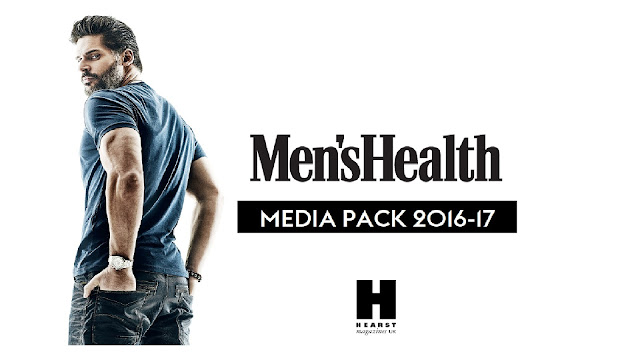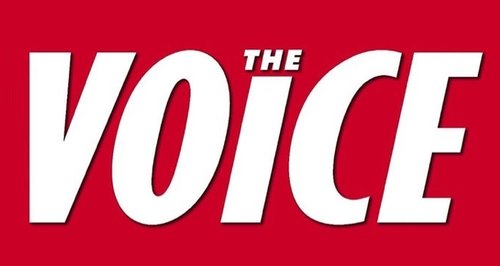MIGRAIN: Audience theory - Effects debate factsheet
1) Complete the questions in the first activity box
a. Do you play violent video games and/or watch violent films? Are you violent in ‘real life’?
Yes, I sometimes play violent video games such as Mortal Combat X and I watch horror movies that include violence in them. However, I am not violent in real life.
b. Do you ever see a product advertised on TV or on the internet and decide you want to buy it?
Most of the time I would want to buy it because of the way it is advertised. However, I end up forgetting about it or changing my mind when I see it in real life in the store.
c. Have you ever seen a documentary which has drawn your attention to an issue which you now feel strongly about?
I've seen many documentaries about strange cases that have occurred in the world. For example, 'The girl who is a mermaid', 'The teenage girl who looks 50', 'The boy who has lived in the past'. This has drawn my attention to the issue of how these people are struggling to live a normal life because of how different they. It has taught me not to judge people.
2) What are the four categories for different effects theories?
The four categories for different effects theories are:
• Direct Effect Theories (e.g- Hypodermic Syringe Theory & Cultivation Theory)
• Diffusion Theories (e.g- Two-Step Theory)
• Indirect Effect Theories
• The Pluralist Approach
3) What are the examples provided for the hypodermic needle theory - where media texts have been blamed for certain events?
Some texts which have been blamed for specific events:
• Child’s Play (a movie) – The murder of Jamie Bulger
• Marilyn Manson (a singer) – The Columbine High School shootings
• Natural Born Killers (a movie) – a number of murders committed by romantically linked couples.
4) What was the 1999 Columbine massacre? You may need to research this online in addition to the information on the factsheet.
The 1999 Columbine massacre is the name given to the high school shooting that ocurred on April 20, 1999 at Columbine High School in Littleton, Colorado. Two teenagers, Eric Harris (18) and Dylan Klebold (17), were responsible for the shooting. They killed 13 people and wounded more than 20 others before turning their guns on themselves and committing suicide.
5) What are the reasons listed on the factsheet to possibly explain the Columbine High School massacre?
The factsheet states that the Columbine High School shootings occurred due to a complex relationship between:*
o The ease of access to firearms and the social acceptance of gun ownership
o The alienation felt by teenagers who felt as though they did not fit in
o The hopelessness caused by living in an area where unemployment was high and was economically disadvantaged
o The general desensitisation caused by access to a range of violent images: film, TV, the news, the
internet
[* This is the argument offered by Michael Moore in his film Bowling for Columbine]
6) What does Gerbner's Cultivation theory suggest?
Gerbner's Cultivation theory suggests that media effects attitudes rather than behaviour. It believes that the media connotes 'appropriate' attitudes of society and what values are seen as normal in our culture. Gerbner believes that the repetition of these connotations will lead to an audience becoming desensitised to negative and/or violence representations because they start to believe that this is natural and is the norm.
7) How does this front page of the Daily Mail (from this week - Wednesday 16 November) link to Cultivation theory? The Mail Online version of the story is here.

The front page of the Daily Mail features a massive, bold headline of 'Under-5s glued to screens 4 hours each day'. This links to Cultivation Theory as it shows how addicted these young children have become to the internet and media. The internet and technology have become such a normal part of our life that parents do not realise the negative effect it is having on their children. ‘The majority of schools encourage children to use digital devices as part of learning, but they are feeding the addiction and the addiction is then going home.' states Chris McGovern, of the Campaign for Real Education. ‘Headteachers have told us that children seem less empathetic and have shorter attention spans than before.' and this is due to their addiction to the internet.
8) What does the factsheet suggest about action films and the values and ideologies that are reinforced with regards to violence?
The factsheet talks about how in movies there are two types of violence. 'good violence' such as protecting a family member or killing an evil person is seen as acceptable. The other type of violence is 'bad violence'. This refers to violence for financial gain or fun, threatening weaker people or the state/government. This violence is seen as unacceptable. By representing 'good violence' in this way makes these actions seem natural and the audience are less likely to question their morality. 'Violence is supported in action films as a method for the hero to reach his goal. The only difference between him and the villain is that we agree with the hero’s motivations.'
9) What criticisms of direct effect theories are suggested in the factsheet?
The hypodermic needle theory is criticised for being oversimplified. It makes simplified judgements about the audience as it views them like animals who would just simply absorb everything they see and change their behaviour according to this. It fails to recognise the many complicated reasons that could lead to a particular action (e.g- killing someone).
10) Why might the 1970s sitcom Love Thy Neighbour be considered so controversial today? What does this tell us about Reception theory and how audiences create meanings?
Love Thy Neighbour is so controversial today because of the racisim included in it. In the 1970s this would have been seen as acceptable because racism wasn't seen as a bad thing. Times have changed and so have people’s attitudes and values. What was acceptable as the topic for comedy some decades ago, no longer is. This tells us that the factor 'Historical location' in reception theory has a lot to do with how audiences' react.
11) What examples are provided for Hall's theory of preferred, negotiated and oppositional readings?
Hall focuses on the way that texts can be interpreted differently. Preferred (dominant) reading is the way media producers want the text to be portrayed- an acceptance of the intended meaning.
Negotiated reading is a broad acceptance of the intended meaning but with some personal modification. Finally, oppositional reading is an understanding of the intended meaning but a rejection of it in favour of one created by the individual. The factsheet gives these examples- Someone who is prone to violent behaviour may find that violent images stimulate that side of them and someone who has a weakness for chocolate may be tempted to buy some after watching an advert.
12) Which audience theory do you think is most convincing? Why? It is important that you develop critical autonomy in judging the arguments for and against different theories and form your own opinion on these issues.
a. Do you play violent video games and/or watch violent films? Are you violent in ‘real life’?
Yes, I sometimes play violent video games such as Mortal Combat X and I watch horror movies that include violence in them. However, I am not violent in real life.
b. Do you ever see a product advertised on TV or on the internet and decide you want to buy it?
Most of the time I would want to buy it because of the way it is advertised. However, I end up forgetting about it or changing my mind when I see it in real life in the store.
c. Have you ever seen a documentary which has drawn your attention to an issue which you now feel strongly about?
I've seen many documentaries about strange cases that have occurred in the world. For example, 'The girl who is a mermaid', 'The teenage girl who looks 50', 'The boy who has lived in the past'. This has drawn my attention to the issue of how these people are struggling to live a normal life because of how different they. It has taught me not to judge people.
2) What are the four categories for different effects theories?
The four categories for different effects theories are:
• Direct Effect Theories (e.g- Hypodermic Syringe Theory & Cultivation Theory)
• Diffusion Theories (e.g- Two-Step Theory)
• Indirect Effect Theories
• The Pluralist Approach
3) What are the examples provided for the hypodermic needle theory - where media texts have been blamed for certain events?
Some texts which have been blamed for specific events:
• Child’s Play (a movie) – The murder of Jamie Bulger
• Marilyn Manson (a singer) – The Columbine High School shootings
• Natural Born Killers (a movie) – a number of murders committed by romantically linked couples.
4) What was the 1999 Columbine massacre? You may need to research this online in addition to the information on the factsheet.
The 1999 Columbine massacre is the name given to the high school shooting that ocurred on April 20, 1999 at Columbine High School in Littleton, Colorado. Two teenagers, Eric Harris (18) and Dylan Klebold (17), were responsible for the shooting. They killed 13 people and wounded more than 20 others before turning their guns on themselves and committing suicide.
5) What are the reasons listed on the factsheet to possibly explain the Columbine High School massacre?
The factsheet states that the Columbine High School shootings occurred due to a complex relationship between:*
o The ease of access to firearms and the social acceptance of gun ownership
o The alienation felt by teenagers who felt as though they did not fit in
o The hopelessness caused by living in an area where unemployment was high and was economically disadvantaged
o The general desensitisation caused by access to a range of violent images: film, TV, the news, the
internet
[* This is the argument offered by Michael Moore in his film Bowling for Columbine]
6) What does Gerbner's Cultivation theory suggest?
Gerbner's Cultivation theory suggests that media effects attitudes rather than behaviour. It believes that the media connotes 'appropriate' attitudes of society and what values are seen as normal in our culture. Gerbner believes that the repetition of these connotations will lead to an audience becoming desensitised to negative and/or violence representations because they start to believe that this is natural and is the norm.
7) How does this front page of the Daily Mail (from this week - Wednesday 16 November) link to Cultivation theory? The Mail Online version of the story is here.

The front page of the Daily Mail features a massive, bold headline of 'Under-5s glued to screens 4 hours each day'. This links to Cultivation Theory as it shows how addicted these young children have become to the internet and media. The internet and technology have become such a normal part of our life that parents do not realise the negative effect it is having on their children. ‘The majority of schools encourage children to use digital devices as part of learning, but they are feeding the addiction and the addiction is then going home.' states Chris McGovern, of the Campaign for Real Education. ‘Headteachers have told us that children seem less empathetic and have shorter attention spans than before.' and this is due to their addiction to the internet.
8) What does the factsheet suggest about action films and the values and ideologies that are reinforced with regards to violence?
The factsheet talks about how in movies there are two types of violence. 'good violence' such as protecting a family member or killing an evil person is seen as acceptable. The other type of violence is 'bad violence'. This refers to violence for financial gain or fun, threatening weaker people or the state/government. This violence is seen as unacceptable. By representing 'good violence' in this way makes these actions seem natural and the audience are less likely to question their morality. 'Violence is supported in action films as a method for the hero to reach his goal. The only difference between him and the villain is that we agree with the hero’s motivations.'
9) What criticisms of direct effect theories are suggested in the factsheet?
The hypodermic needle theory is criticised for being oversimplified. It makes simplified judgements about the audience as it views them like animals who would just simply absorb everything they see and change their behaviour according to this. It fails to recognise the many complicated reasons that could lead to a particular action (e.g- killing someone).
10) Why might the 1970s sitcom Love Thy Neighbour be considered so controversial today? What does this tell us about Reception theory and how audiences create meanings?
Love Thy Neighbour is so controversial today because of the racisim included in it. In the 1970s this would have been seen as acceptable because racism wasn't seen as a bad thing. Times have changed and so have people’s attitudes and values. What was acceptable as the topic for comedy some decades ago, no longer is. This tells us that the factor 'Historical location' in reception theory has a lot to do with how audiences' react.
11) What examples are provided for Hall's theory of preferred, negotiated and oppositional readings?
Hall focuses on the way that texts can be interpreted differently. Preferred (dominant) reading is the way media producers want the text to be portrayed- an acceptance of the intended meaning.
Negotiated reading is a broad acceptance of the intended meaning but with some personal modification. Finally, oppositional reading is an understanding of the intended meaning but a rejection of it in favour of one created by the individual. The factsheet gives these examples- Someone who is prone to violent behaviour may find that violent images stimulate that side of them and someone who has a weakness for chocolate may be tempted to buy some after watching an advert.
12) Which audience theory do you think is most convincing? Why? It is important that you develop critical autonomy in judging the arguments for and against different theories and form your own opinion on these issues.
In conclusion, I think that the Reception theory is the most convincing. This is because it takes in to account that no text has one single meaning. The audience create meanings for themselves based on
many individual factors such as:
• Gender
• Age
• Race
• Religious beliefs
•·Personal values
• Upbringing and education
• Geographical location
• Historical location
This is a strength of the theory as it takes in to account that everyone is an individual. It attempts to take personal differences into account rather than generalise as to how the media affects us all in the same way (which is what the Hypodermic needle theory and Cultivation theory does.) At the same time the theory has a weakness – your response to a text may be influenced by context of everyday life. Reception analysis does not take this into account. Pluralism takes this in to account as it sees media institutions as free to present whatever point of view they wish and audiences being equally free to choose from the ideas and representations available. However, I believe it is not the best theory because it is based on a number of unrealistic assumptions, for example- all social groups are catered for by the mass media.


Comments
Post a Comment